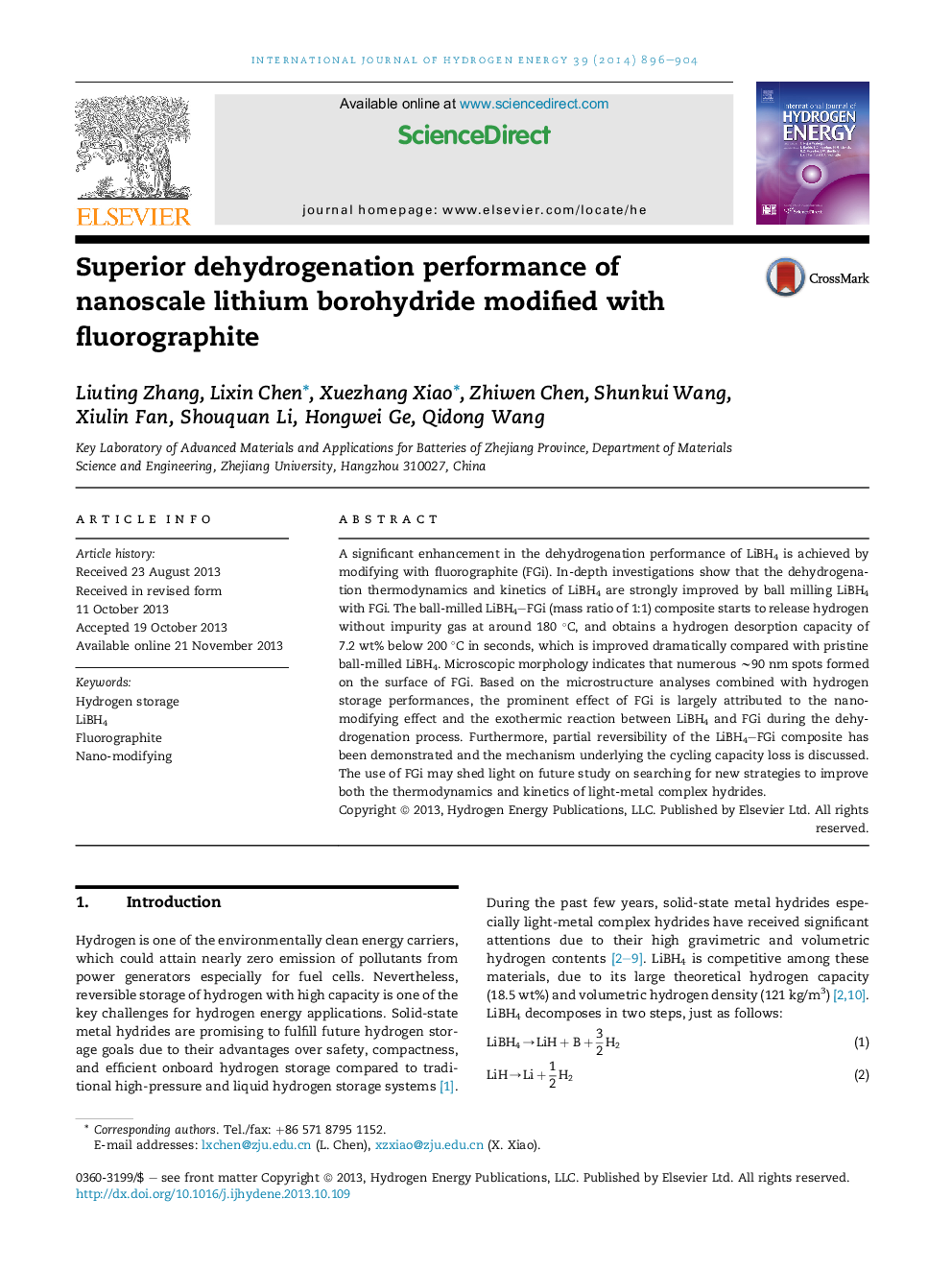| کد مقاله | کد نشریه | سال انتشار | مقاله انگلیسی | نسخه تمام متن |
|---|---|---|---|---|
| 1276536 | 1497507 | 2014 | 9 صفحه PDF | دانلود رایگان |
• Superior dehydrogenation property is achieved for nano-sized LiBH4 adsorbed on surface of FGi.
• The LiBH4–FGi composite starts to release hydrogen without impurity gas at around 180 °C.
• About 7.4 wt% hydrogen is released within seconds below 200 °C for the LiBH4–FGi composite.
• Partial reversibility of the LiBH4–FGi composite has been demonstrated.
A significant enhancement in the dehydrogenation performance of LiBH4 is achieved by modifying with fluorographite (FGi). In-depth investigations show that the dehydrogenation thermodynamics and kinetics of LiBH4 are strongly improved by ball milling LiBH4 with FGi. The ball-milled LiBH4–FGi (mass ratio of 1:1) composite starts to release hydrogen without impurity gas at around 180 °C, and obtains a hydrogen desorption capacity of 7.2 wt% below 200 °C in seconds, which is improved dramatically compared with pristine ball-milled LiBH4. Microscopic morphology indicates that numerous ∼90 nm spots formed on the surface of FGi. Based on the microstructure analyses combined with hydrogen storage performances, the prominent effect of FGi is largely attributed to the nano-modifying effect and the exothermic reaction between LiBH4 and FGi during the dehydrogenation process. Furthermore, partial reversibility of the LiBH4–FGi composite has been demonstrated and the mechanism underlying the cycling capacity loss is discussed. The use of FGi may shed light on future study on searching for new strategies to improve both the thermodynamics and kinetics of light-metal complex hydrides.
Superior hydrogenation performance is achieved for the nano-sized LiBH4 adsorbed on the surface of FGi, in which a capacity close to 7.4 wt% is realized within seconds. Furthermore, hydrogen can be released at a temperature as low as 180 °C, which can fulfill the operation temperature range of PEM fuel cells. This method is highly promising for monitoring of dehydrogenation properties of metal complex borohydrides and could lead new solid-state hydrogen storage materials to higher performances.Figure optionsDownload as PowerPoint slide
Journal: International Journal of Hydrogen Energy - Volume 39, Issue 2, 13 January 2014, Pages 896–904
